Other life-threatening conditions
Anaphylaxis
- a sudden, life-threatening condition that requires immediate intervention of a rescuer
- a severe allergic reaction affecting the whole body
Definition of an allergy
It is an abnormal inadequate reaction of the body’s immune system to a certain substance (“trigger”) or an allergen.
- anaphylaxis can develop within seconds (if the substance was delivered to the bloodstream), minutes (skin contact) or dozens of minutes (e.g. ingested food) of the exposure to an allergen
- the most common triggers that can cause the anaphylaxis are:
- medications and vaccines - e.g. penicillin antibiotics, contrast agents, etc.
- insects - e.g. bee or a wasp sting
- food - various nuts, seafood, eggs, certain fruits (e.g. strawberries), etc.
- latex
Signs and symptoms
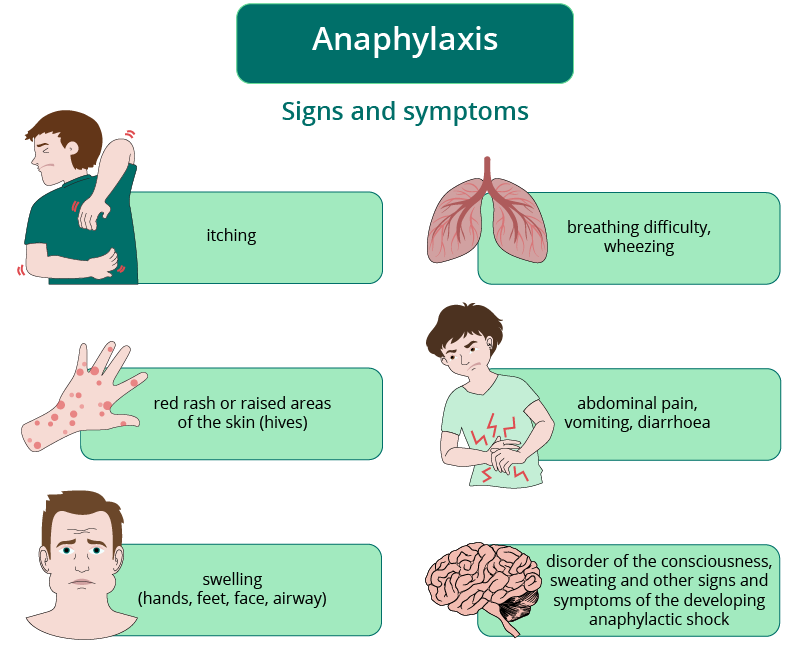
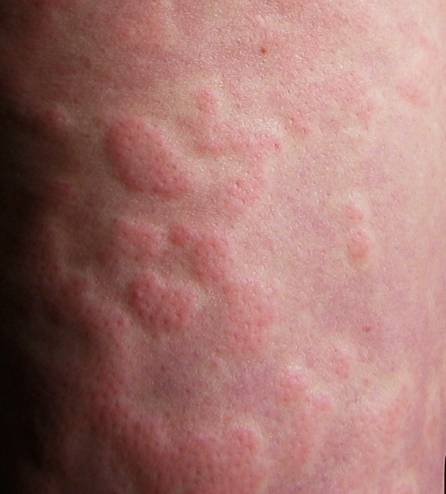
The most dangerous aspect of anaphylaxis is swelling, which may affect the airway, and the quickly developing anaphylactic shock (disorder of the consciousness, hypotension, etc.).
In Unit 4, we learned about the different types of shock. Do you remember what kind of shock is caused by anaphylaxis?
| hypovolemic | |
| distributive | |
| cardiogenic | |
| obstructive |
First Aid
- use SSS ABC approach
- if possible, stop the contact of a patient with the substance that caused the reaction
- assess the severity of the present signs and symptoms
- communicate with the patient, try to calm the patient down
- ask the patient or the bystanders whether the patient has any known allergies
- try to find the patient’s emergency kit
- the patient has the emergency kit - use the auto-injector according to the instructions, call EMS, observe the patient and check them regularly until the EMS arrives
- the patient does not have the emergency kit (e.g. it is the first such a reaction they have experienced or they simply do not have it with them) - call EMS, observe the patient and check them regularly until the EMS arrives
- if the patient is unresponsive, open the airway and check for the breathing
- YES, the patient is breathing normally - check the patient regularly; if he stops breathing, start providing CPR
- NO, the patient is not breathing normally - start providing CPR
- report any change in the patient’s condition to the EMS
The auto-injector can be used even in the unresponsive patients.
Even if the symptoms of the anaphylactic shock have relieved after the use of the auto-injector, the patient should still be observed for at least 24 hours because of the risk of a delayed reaction (see below).
How to properly use an auto-injector?
- follow the instructions on the case of the auto-injector
- before using it, read the instructions carefully (different brands can differ slightly - in this particular case we are talking about the EpiPen auto-injector; all auto-injectors contain epinephrine)
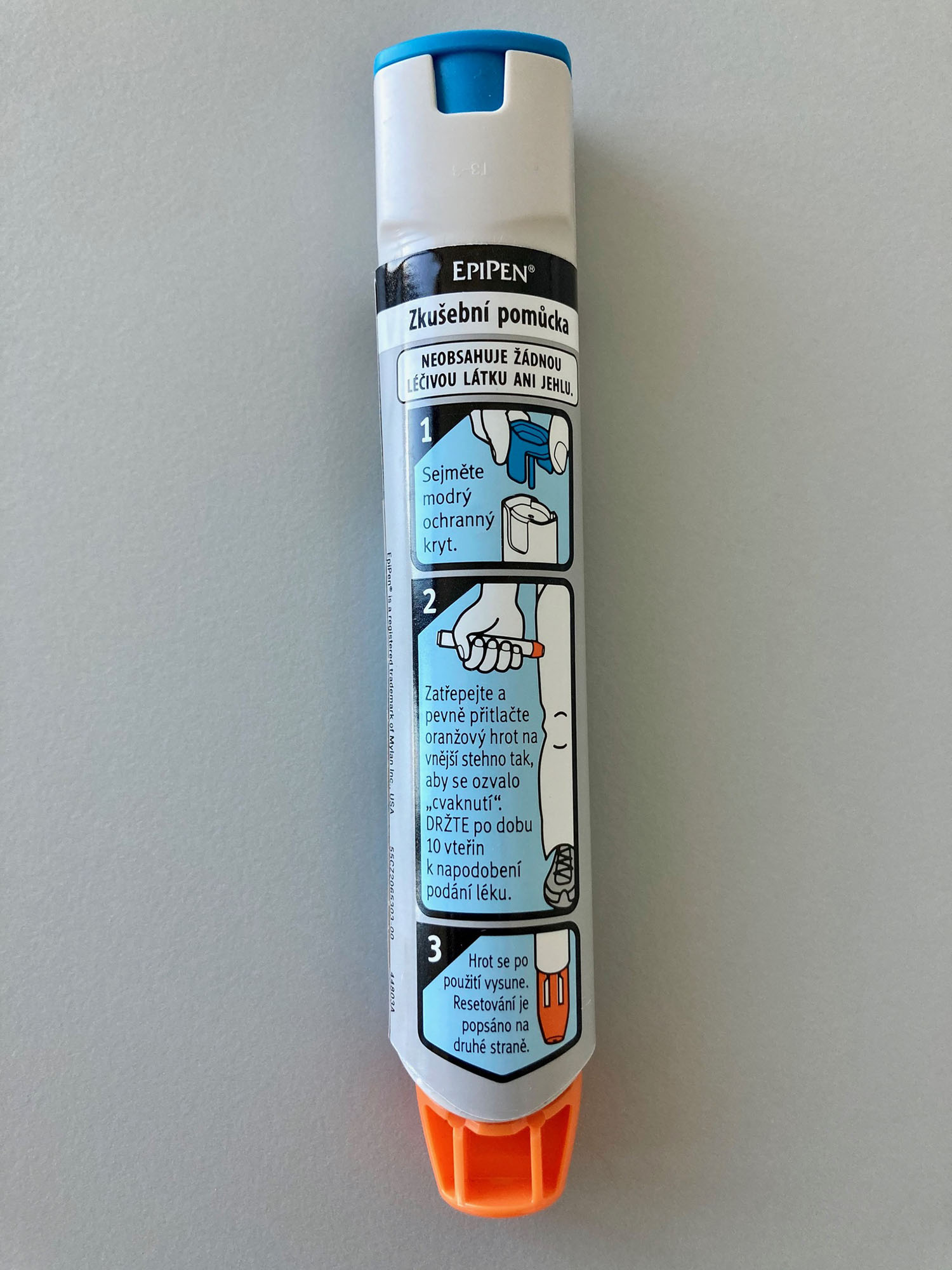
- take the auto-injector out of its packaging
- hold it in one hand with the orange end pointing downwards
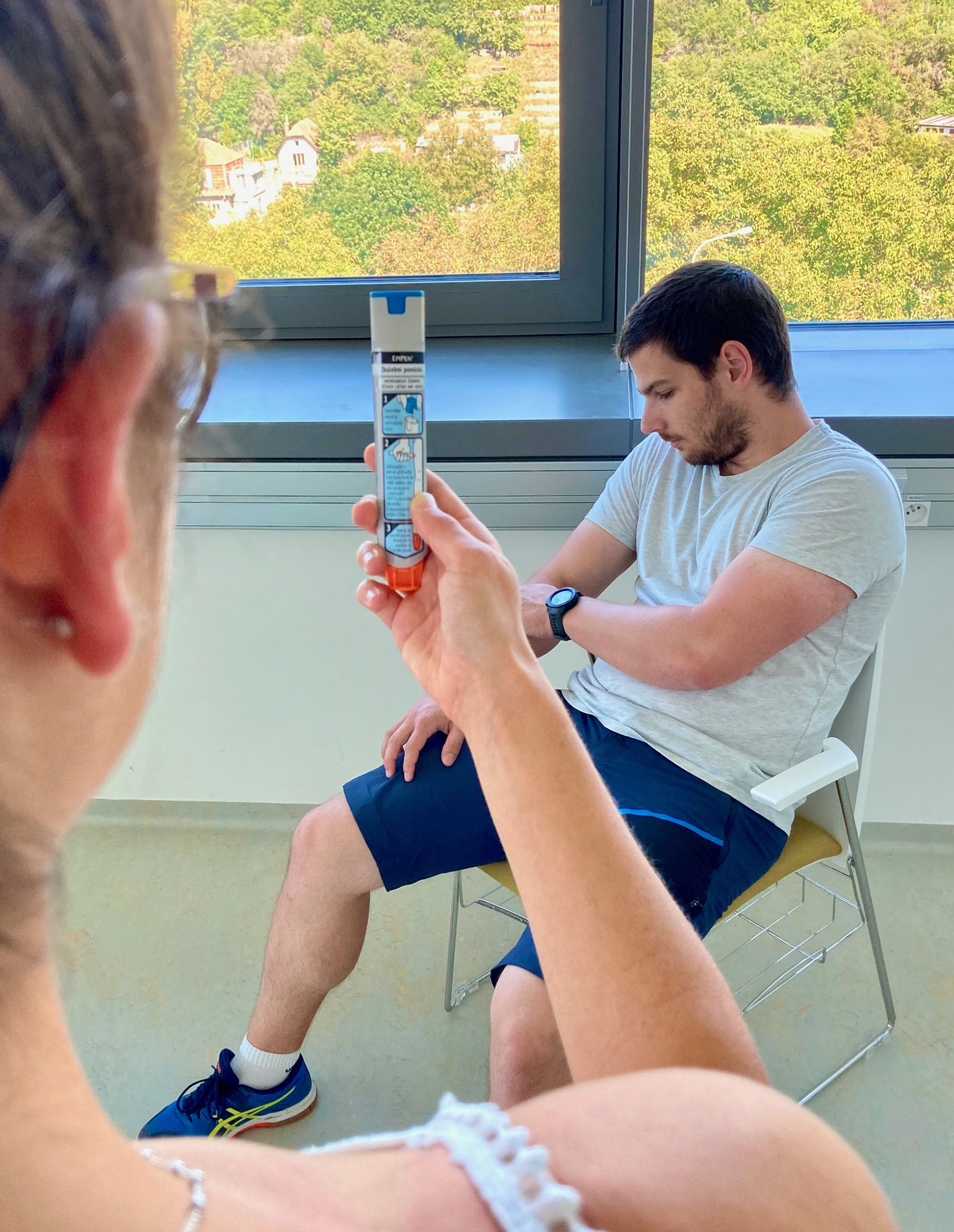
- remove the blue safety cap by pulling it upwards with your other hand - the auto-injector is now ready to be used

- firmly inject the orange tip into the outer side of the patient’s upper thigh and push it until you hear a clicking sound
- hold the auto-injector in place for at least 5 seconds
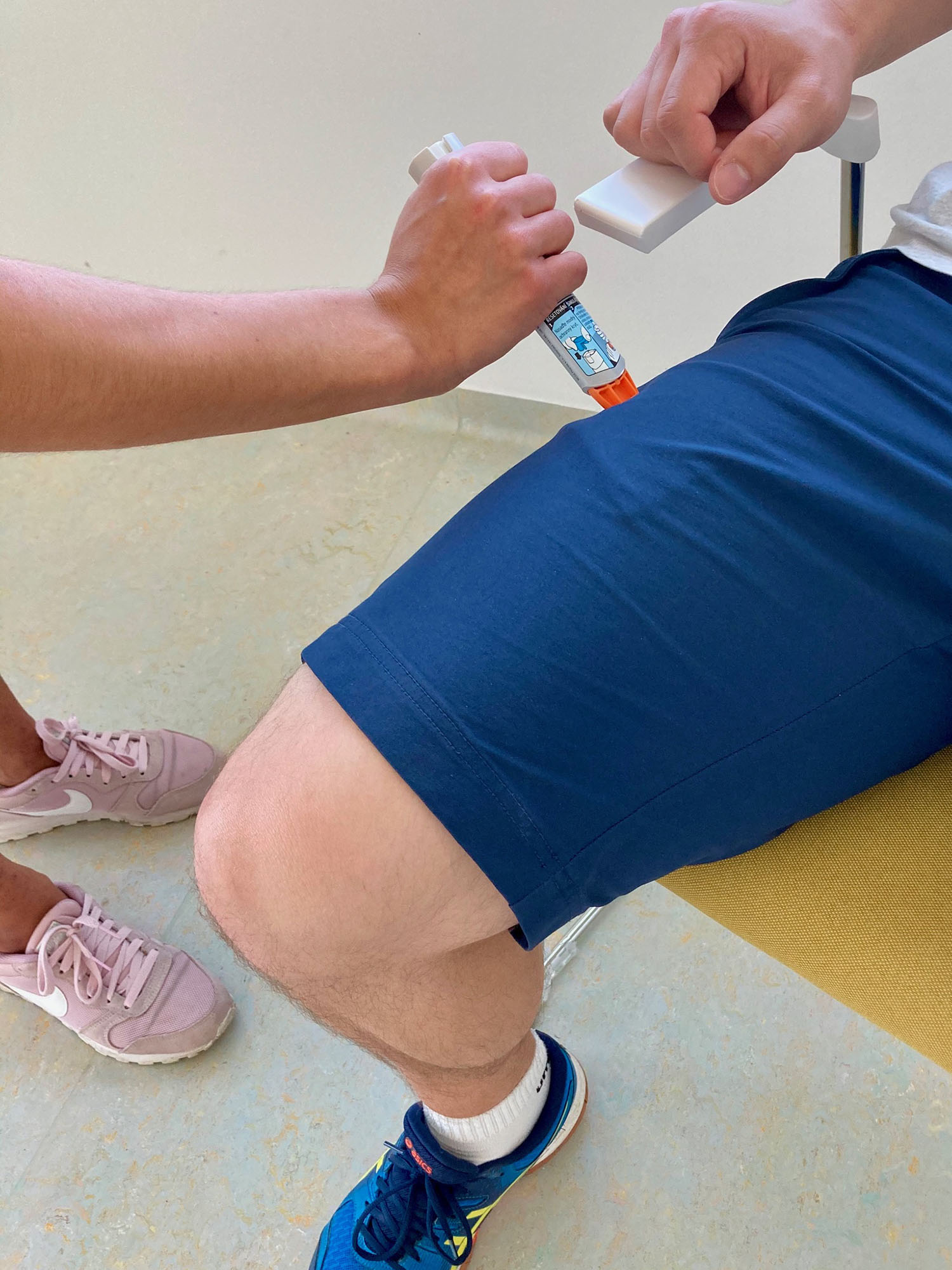
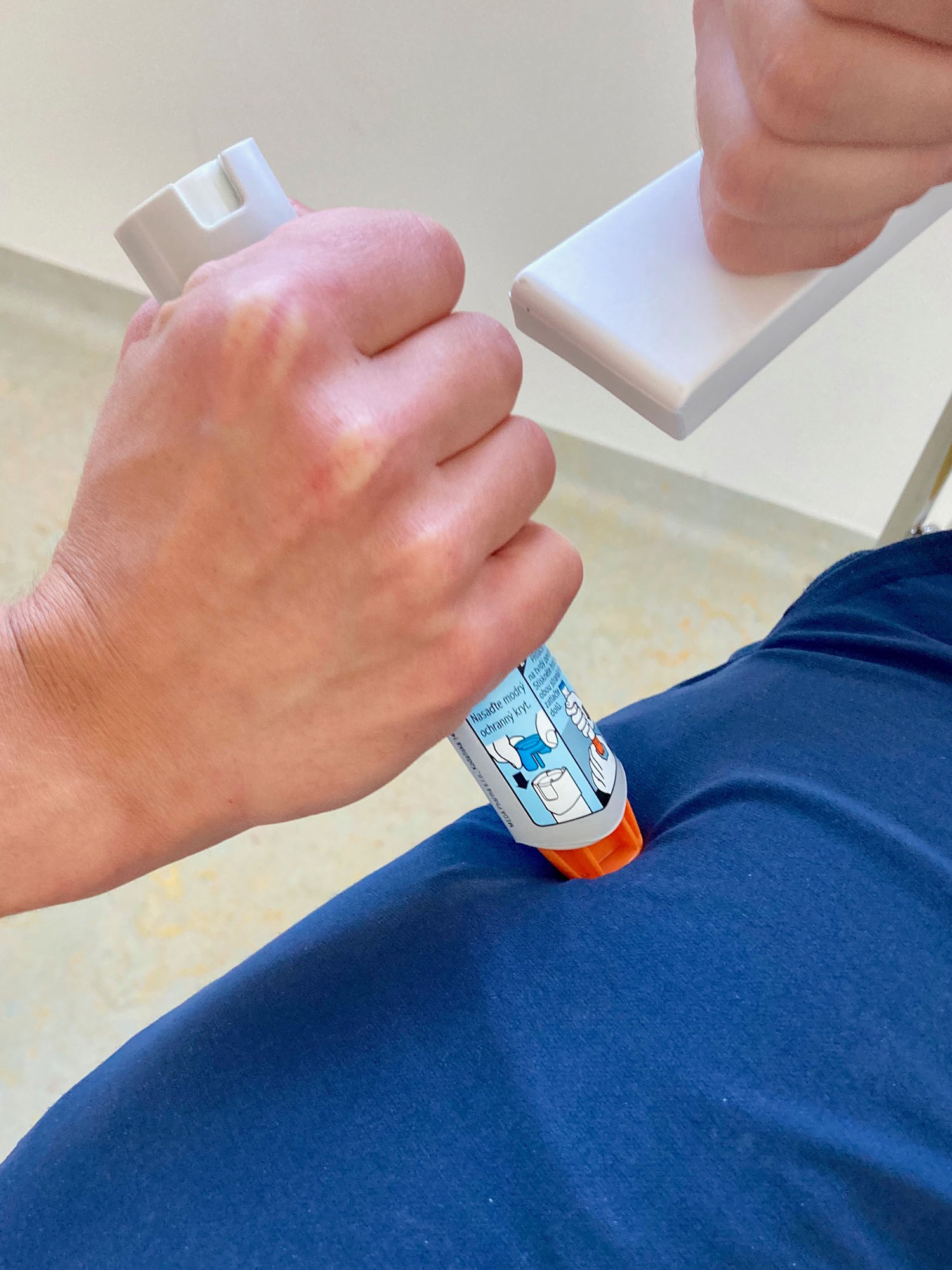
- after the application, the needle will automatically slide under the orange safety cover
- massage the area of the injection with your fingers for a while
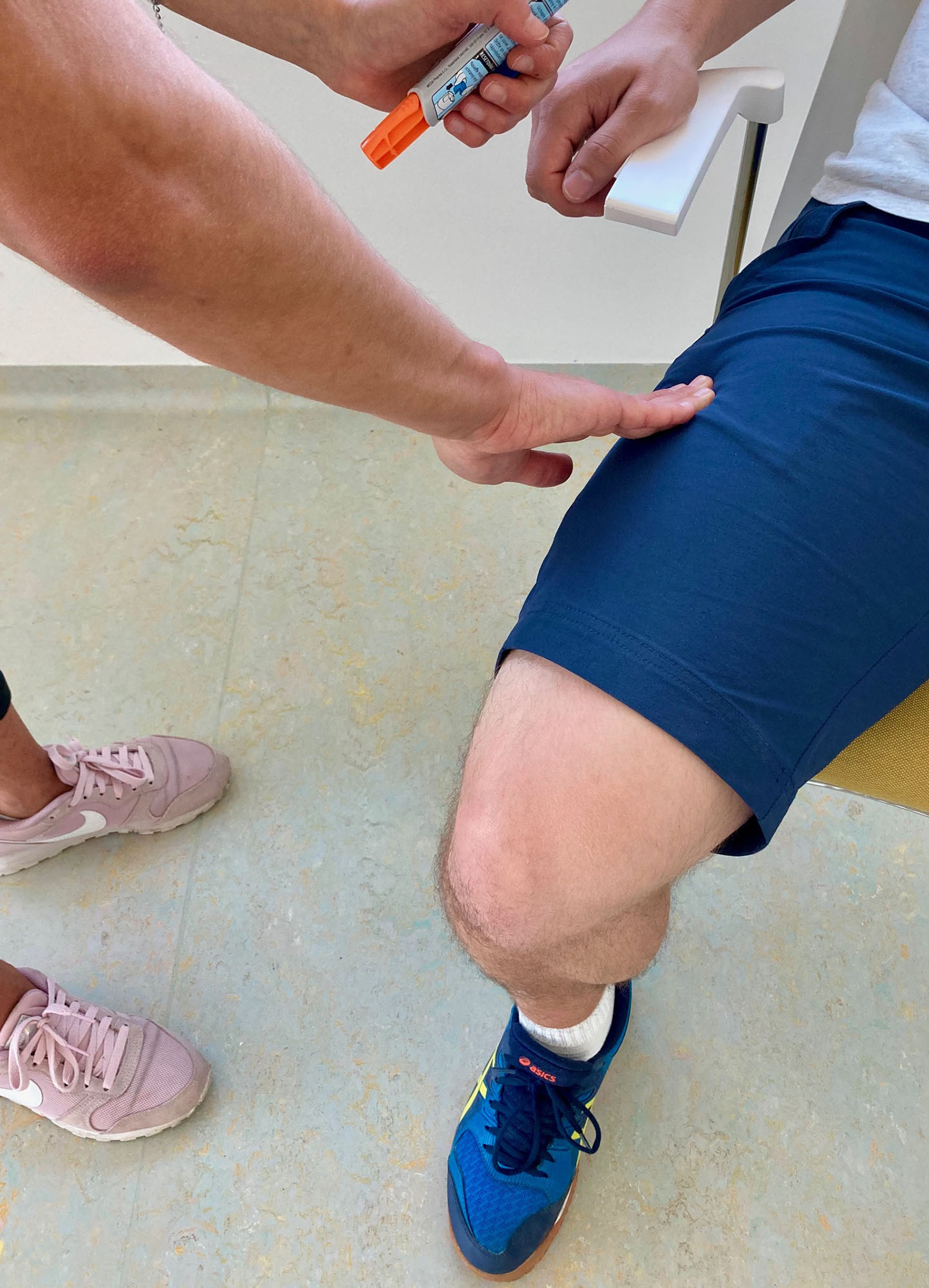
- the auto-injector:
- can be administered through thin clothes if necessary
- can be administered to an unresponsive patient
- cannot be used again after being administered (take care to use it correctly)
- can be self-administered by the patient if their condition allows it
- can be administered again after 5 - 15 minutes, if the symptoms have not relieved after the first dose and if the patient has two auto-injectors in the emergency kit
Complications of the anaphylaxis
- the patient loses consciousness, becomes unresponsive, after opening the airway is/is not breathing normally - see above
- the patient seemingly recovers, but the symptoms develop again after a while (= a delayed reaction) - provide first aid as stated above
Take home message
- In case of anaphylaxis, you need to administer an epinephrine auto-injector as soon as possible (if the patient has an emergency kit on their person) and call EMS.
- The symptoms can develop again after a while, or the patient can have a delayed reaction to the trigger - therefore it is necessary that the patient is observed after the use of the auto-injector (call EMS even if the symptoms relieve).